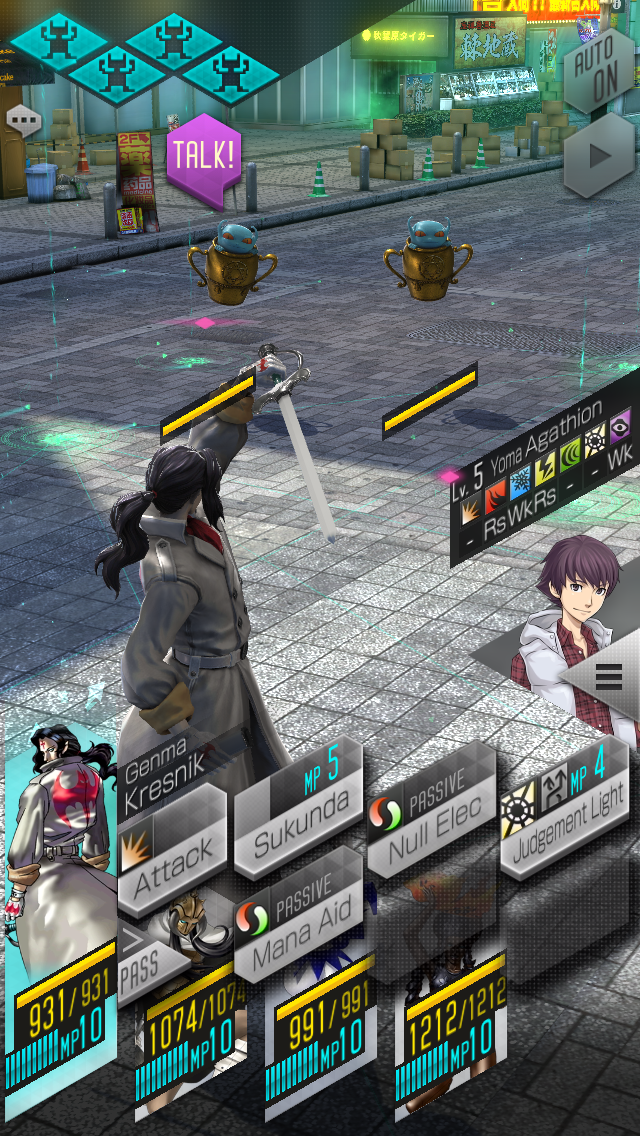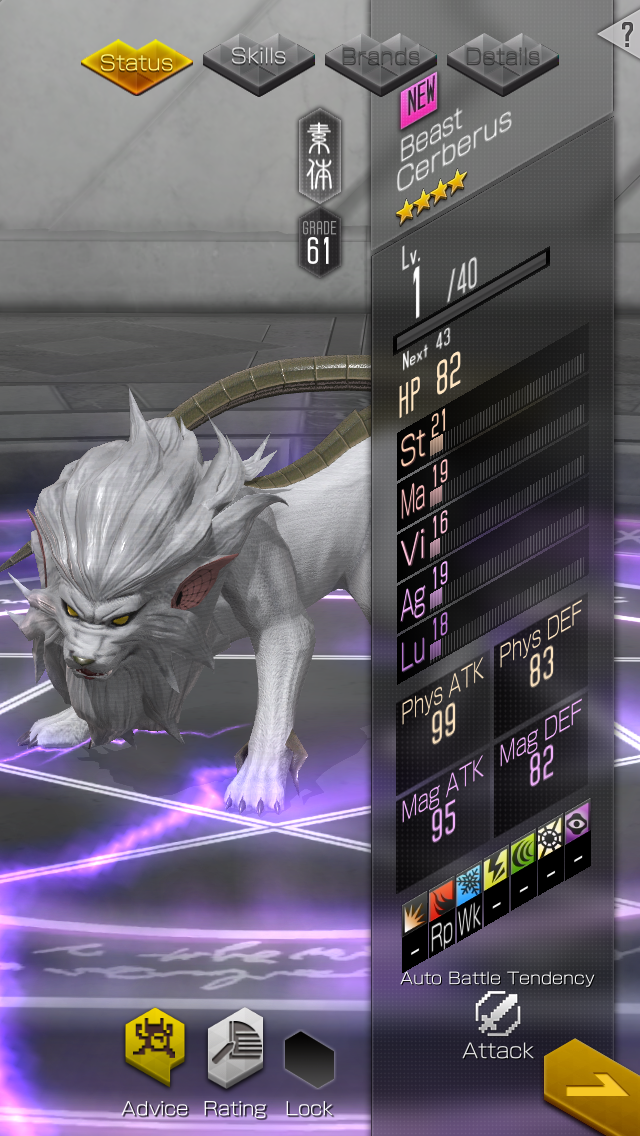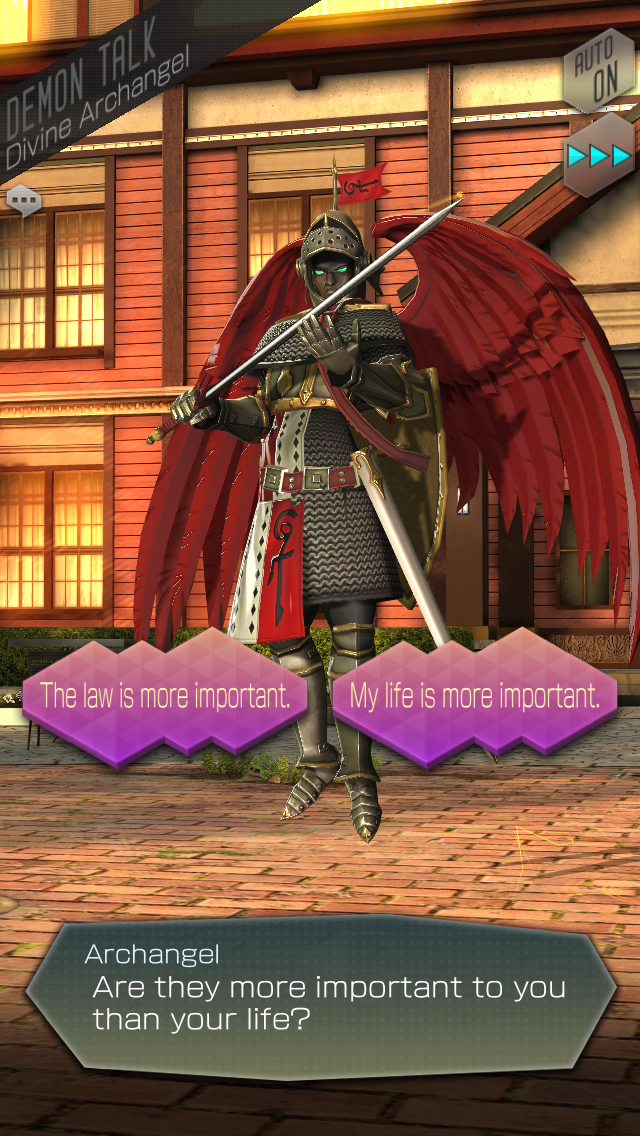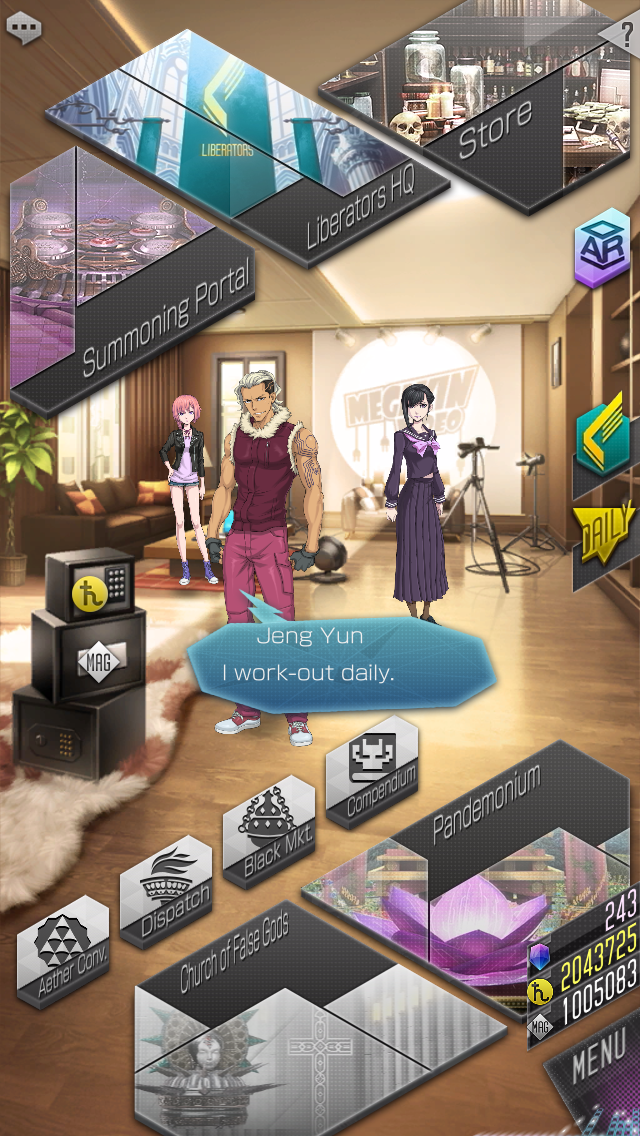
Shin Megami Tensei Liberation Dx2 Review
Over the past week, I have spent a large amount of my free time sinking my teeth into Shin Megami Tensei Liberation Dx2, a new mobile entry derived from the Shin Megami Tensei series. I came away from it with a pretty strong impression. For a mobile RPG, it is a well-crafted and entertaining distraction when people need something to enjoy while on the go - especially for SMT diehards.

Let’s talk a little bit about the combat system. This has clearly been modeled after its console counterparts, specifically the PlayStation 2 iterations. Think of it like a light version of the battle system so many of us have come to know and love, which makes the experience very approachable for fans and newcomers whether you want to get into Player vs Enemy or Player vs Player modes.
Combat revolves around the familiar Press Turn system which determines the number of actions either side is able to take, with a whole icon representing each command. Depending on the results (like scoring a critical hit or exploiting an enemy weakness), you have the opportunity to turn the whole icon into a half icon, otherwise known as “blinking.” This effectively allows you to take additional actions before the enemy is able to. As you'd expect, the turn order is decided by the character’s agility stat.
Speaking of stats, magic - or MP - works a little differently in this game. Rather than having a pool of MP you can draw from to cast a variety of spells, you only get a maximum of 10 MP to use. This bar refills once it’s the enemy’s turn, which adds a nice dose of strategy. Perhaps you want to skip a turn or two to get your MP back for the next phase, or just go all out right away to capitalize on a demon’s weakness.

However, there are some abilities that carry a limited number of uses per battle, so all these different aspects must be considered especially on the more difficult encounters. I will say the biggest difference here is that when you cast spells like Mudo or Hama, you only cause damage instead of Instant Kills.
Just like with other entries, you are also given the opportunity to communicate with demons during battle. The feature here is roughly the same as it is elsewhere in the series. You can decide whether to approach a demon either voluntarily or when they beg for their lives. From here, you’ll have to play along with their personalities by answering a series of questions.
Thankfully, the conversations aren't randomly generated, so if you happen to fail to make them happy during this sequence, you can just remember the correct choices for next time. This is another way to gain allies outside of summoning demons through gems and tickets.
There’s plenty of other examples of progression to be found within. You are able to level up your characters in pretty much any particular way you want through the use of SP. For example, the main protagonist has a number of passive skills that do everything from increasing the amount of experience you earn (great for grinding demon levels) to recovering your health once you have defeated a horde of enemies.

Skill inheritance also works a little bit differently but should be familiar to anyone who has played a similar game like Fire Emblem Heroes. You will need to sacrifice a demon that shares the same rank as the one you’re looking to enhance in order to earn Skill Points. These Skill Points can then be used to learn whatever inheritable skills you’re interested in applying to your demon.
It’s a great way to optimize your roster of demons, all of which are labeled by a color that identifies their archetype - Clear, Red, Teal, Purple, and Yellow. Each of these colors corresponds to the special skills they gain once they’re Awakened, such as Red demons earning an additional attack skill or Teal demons collecting an extra nullification.
As you can probably tell from all my chatter about the mechanics, Shin Megami Tensei Liberation Dx2 has a lot of depth going for it. This is why it’s uniquely positioned as a friendly free-to-play experience. Sure, there will be those out there who are either extremely lucky with the gacha system or those who decide to take a shortcut and spend gobs of disposable income.
On the other hand, you can get a lot of the best demons in the game through Fusion. While some demons are only obtainable through gacha (like Pale Rider), you can get the best demons in the game through Fusing so long as you put the time and effort into earning the required resources.

And then we get into my main complaints of Shin Megami Tensei Liberation Dx2. I should point out that this is a free-to-play game, but I don't really have to because the game is constantly and egregiously reminding you of this fact thanks to all the reminders that encourage players to spend gems and real-life currency on in-game items. They really need to dial it back a little because it delivers a bad first impression, especially for genre newcomers.
The story also leaves a lot to be desired. Basically, it’s about on par with what you’d expect from the format, so don’t come into this game expecting a plot on the same level as the series is known for. Finally, I don’t know if it’s because the game was still in beta up until now, but the app sucks up a lot of battery, so you may want to have a portable battery charger or an adapter in case you run out of juice too quickly.
Outside of these issues, Shin Megami Tensei Liberation Dx2 is worth playing especially if you’re a series fan. If anything, it’s a good way to satisfy our cravings as we await the release of Shin Megami Tensei V. Even if you have never played a Shin Megami Tensei game in your life, but the idea of a very mechanically-driven mobile game interests you, you may find a lot to appreciate here.